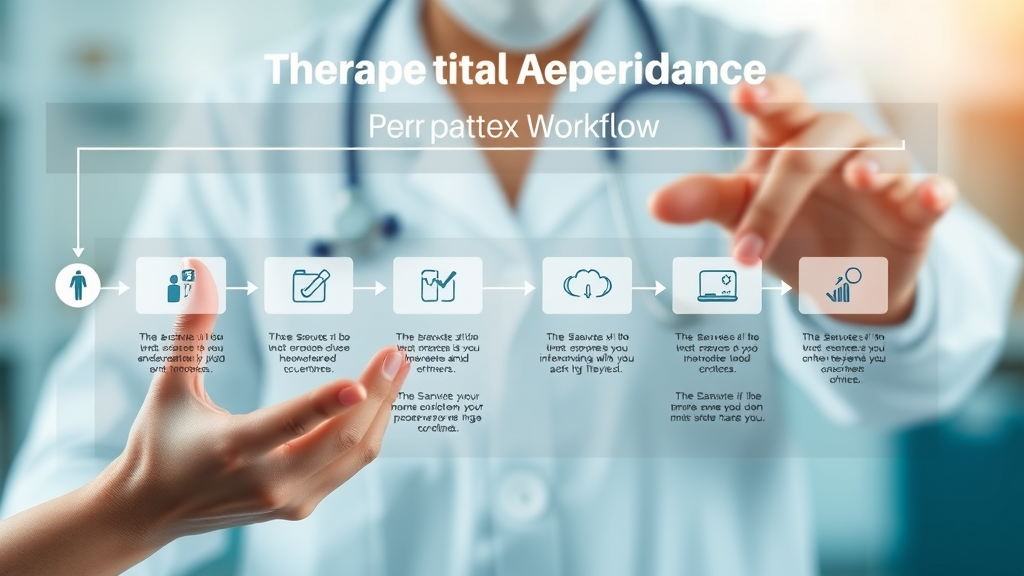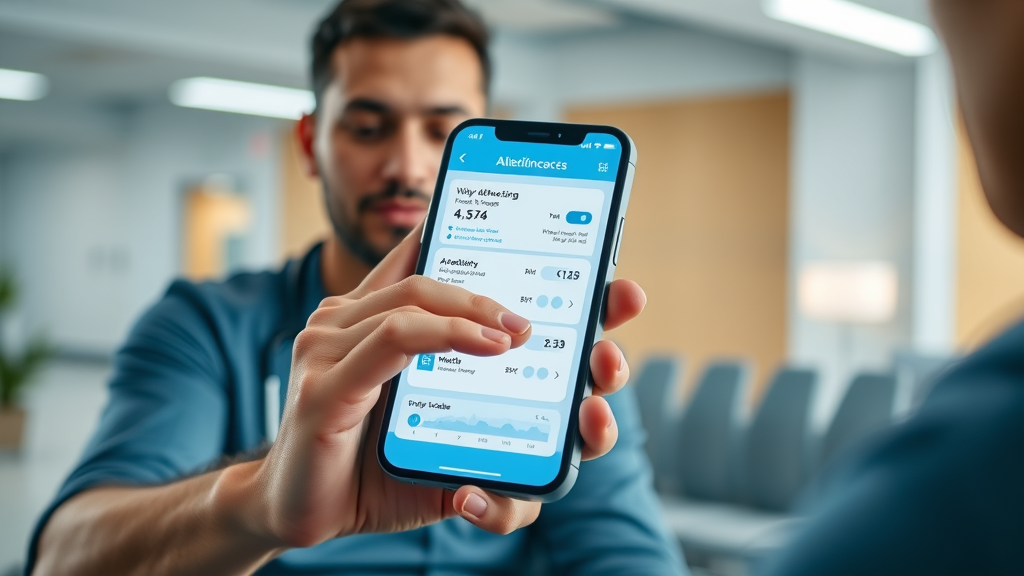Is treatment noncompliance putting patient health or your healthcare practice at risk? With the right approach, therapeutic adherence tracking offers a fast, data-driven way to combat noncompliance, protect health outcomes, and empower both patients and providers. In this guide, you’ll uncover practical methods to detect, analyze, and resolve noncompliance—often before it leads to serious setbacks. Harnessing smart tracking tools can transform your approach to better results, every day. Dive in and discover how you can fix noncompliance—fast.

Why Therapeutic Adherence Tracking Is Essential for Rapidly Fixing Noncompliance
Inconsistent medication or therapy compliance can dramatically reduce the effectiveness of any treatment plan, yet it’s one of the most common challenges faced by healthcare professionals and patients alike. Therapeutic adherence tracking addresses this precise pain point by providing real-time, actionable insights into patient behaviors, enabling care teams to intervene quickly and prevent small issues from spiraling into major setbacks. By understanding exactly when and why noncompliance occurs, providers can offer support that is both timely and tailored to the individual patient’s needs.
Relying on guesswork or infrequent follow-up simply isn’t enough. Therapeutic adherence tracking tools close this gap, offering immediate data on missed doses, communication gaps, and patterns that suggest a patient is struggling with their regimen. Armed with this knowledge, providers can initiate fast interventions such as automated reminders, personalized check-ins, and educational resources—all proven to improve adherence rates almost overnight. The sooner noncompliance is detected, the sooner it can be fixed, leading to better outcomes for everyone involved.
- What you'll discover in this guide:
- The definition and impact of therapeutic adherence tracking
- Proven tools and techniques for immediate adherence improvement
- Key metrics for monitoring treatment compliance
Understanding Therapeutic Adherence Tracking: Concepts and Key Benefits
Therapeutic adherence tracking is a proactive approach that leverages digital technology and behavioral monitoring to ensure patients follow their prescribed treatments as intended. This process can range from simple checklists to sophisticated mobile apps and electronic health record (EHR) integrations. Its primary goal is to give both patients and care teams the information they need to keep treatments on track, reduce medical errors, and optimize overall health outcomes.
The benefits of effective adherence tracking stretch beyond just patients. Healthcare providers benefit as well, with fewer unexpected setbacks, reduced readmissions, and improved resource allocation. Modern solutions are designed for ease of use, empowering even tech-averse patients to participate in their health journey. Thanks to simplified interfaces and automated reminders, adherence tracking is now more accessible, reliable, and impactful than ever before.
How Therapeutic Adherence Tracking Detects Noncompliance Early
One of the primary strengths of therapeutic adherence tracking is its ability to detect noncompliance long before it results in negative health outcomes. By tracking real-time patterns—like missed medication doses or skipped appointments—care teams can pinpoint signals of trouble early on. Systems often include features such as automated reminders, interactive prompts, and alerts for care providers, which can nudge patients back on track or prompt an immediate check-in.
Most digital adherence platforms utilize smart notifications sent to a patient’s preferred device, ensuring reminders never go unnoticed. These platforms may also offer progress dashboards, helping individuals visualize their journey and maintain motivation. Early detection means interventions can be tailored—not only to address what’s wrong, but also to provide ongoing encouragement for long-term adherence and success.

Quantifying Impact: The Role of Therapeutic Adherence Tracking in Patient Outcomes
Measuring and improving compliance isn’t just about counting pills. By monitoring precise adherence metrics, healthcare providers can quantify the direct impact that following—or not following—a regimen has on patient outcomes. Strong adherence is correlated with shorter recovery times, lower rates of hospital readmission, and reduced chronic complications. In contrast, poor adherence quickly leads to both short-term setbacks and long-term health risks.
Metrics often tracked include dose timing, medication frequency, and completion of scheduled therapies. With robust data on hand, healthcare teams can make evidence-based adjustments to regimens, provide targeted education, and deploy resources where they have the most impact. The result is a cycle of continuous improvement that keeps both patient health and provider satisfaction moving in the right direction—showing why therapeutic adherence tracking is at the core of modern, outcome-driven care.
Effective Strategies to Maximize Therapeutic Adherence Tracking Results
Implementing therapeutic adherence tracking successfully requires a clear strategy—one that’s deliberate, inclusive, and tailored to both patient capabilities and clinical goals. The most effective approaches combine technology, communication, and process optimization, ensuring every stakeholder is engaged in the mission to boost compliance. This means setting up tracking processes that are seamless for both patient and provider, using tools that fit into daily routines, and leveraging features that anticipate barriers before they escalate.
Success starts with choosing the right blend of technology and human support. Automated tracking systems dramatically reduce administrative workload, while personalized reminders and regular check-ins keep patients motivated and accountable. Finally, ongoing education ensures patients understand the “why” behind their regimen, making them more likely to stick to their treatment plans for the long haul.
Setting Up a Seamless Therapeutic Adherence Tracking Process
To maximize the results of therapeutic adherence tracking, it’s crucial to establish a process that integrates effortlessly into existing workflows. Begin by selecting solutions compatible with your clinic’s management systems, ensuring data can be exchanged securely and in real time. Train staff and orient patients on how to use these systems, keeping the initial learning curve gentle and support readily available.
Implement simple onboarding practices, such as step-by-step guides or interactive demos, to foster confidence and trust. Consider piloting the tracking program with a small patient group and iterate the process based on their feedback before rolling it out broadly. Seamless integration minimizes resistance, reduces missed touchpoints, and helps teams focus more on care delivery and less on administrative hurdles.

Best Tools for Comprehensive Therapeutic Adherence Tracking
A wide range of tools now exist to support comprehensive therapeutic adherence tracking—from mobile apps and patient portals to dedicated electronic pill dispensers. The top performers share common features: real-time alerts, automated reporting, and robust patient engagement modules. Real-time alerts notify both patients and providers the moment adherence slips, while automated reporting generates actionable insights without manual data entry.
Leading platforms often include secure messaging, symptom tracking, and educational content tailored to individual treatment plans. For the best results, look for solutions that prioritize data security, usability, and integration with electronic health records. Engaging patients directly—through notifications, interactive journals, and virtual coaching—has proven especially effective for boosting adherence rates and quickly correcting lapses as they occur.
- Top features in tracking solutions:
- Real-time alerts
- Automated reporting
- Patient engagement modules
“Adherence to therapy remains the single most important modifiable factor for superior healthcare outcomes.”
Actionable Steps: Addressing Noncompliance Through Therapeutic Adherence Tracking
Rapidly correcting noncompliance involves a series of actionable, evidence-based steps. By using tracking data to guide interventions, healthcare teams can address the root causes of nonadherence and create a continuous improvement loop that benefits both patient and provider. Below is a structured approach for tackling noncompliance with speed and precision, designed to yield measurable results in real-world settings.
Each step is grounded in practical experience and technological best practices, ensuring every action is connected to a positive health outcome. Personalization and feedback are critical—no two patients face the exact same barriers. Thus, combining digital reminders, human support, and regular outcome analysis is key for long-term success.
- Identify causes of noncompliance via tracking data
- Personalize follow-up interventions
- Leverage reminders and support resources
- Analyze outcomes and iterate processes

| Common Barriers to Adherence | Tracking Solution | Outcome |
|---|---|---|
| Missed doses | SMS reminders | Improved adherence rates |
| Complex regimens | Digital education modules | Enhanced understanding |
| Side effects | Symptom logging & reporting | Timely intervention |
Frequently Asked Questions on Therapeutic Adherence Tracking
How does therapeutic adherence tracking work?
Therapeutic adherence tracking uses digital tools—like apps, smart devices, and EHR integrations—to monitor whether patients are following their treatment plans as prescribed. These systems capture data on medication dosing, appointment attendance, and even symptom patterns. Providers and patients receive clear, real-time feedback, making it easy to spot noncompliance and take corrective action quickly, dramatically improving the odds of successful treatment.

What are the top benefits of implementing therapeutic adherence tracking?
The primary benefits include early detection of noncompliance, personalized support for high-risk patients, and significant improvements in overall health outcomes. By using adherence tracking, healthcare teams can reduce hospitalizations, avoid treatment-related complications, and build stronger bonds with patients. Patients, in turn, gain greater confidence and engagement as their progress is tracked proactively and transparently.
Which therapeutic adherence tracking tools best support health professionals?
Leading tools for therapeutic adherence tracking include mobile health apps with real-time alert features, integrated EHR modules, wearable medication reminders, and patient engagement portals. These solutions are designed to be user-friendly, secure, and compatible with different practice sizes. Look for platforms that offer customizable alerts and reporting features, as well as integrations with telehealth and digital symptom monitoring systems.
Summary: The Road to Optimal Outcomes with Therapeutic Adherence Tracking
Embracing therapeutic adherence tracking enables rapid detection and resolution of noncompliance—leading to dramatically better patient outcomes. By combining data-driven insight, technology, and teamwork, you can transform noncompliance from a persistent risk into a solvable challenge.

 Add Row
Add Row  Add
Add 



Write A Comment